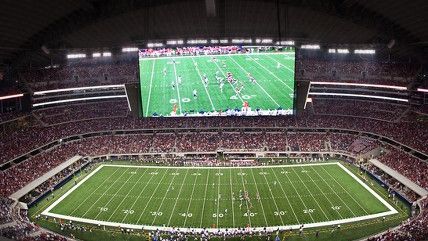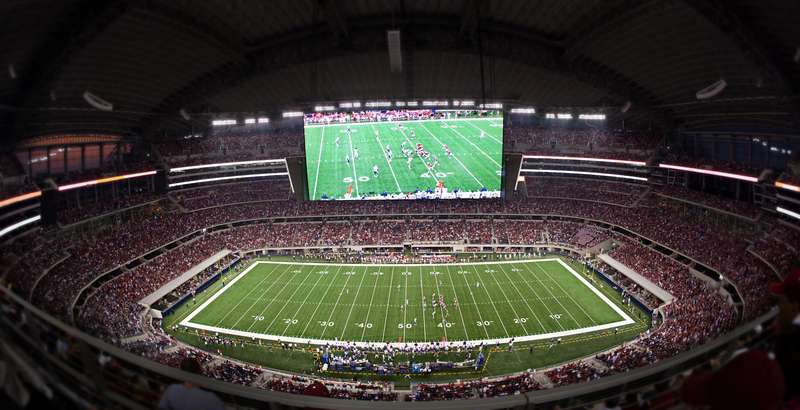U.S. Taxpayers Have Been Forced to Pay Over $3.2 Billion on Sports Stadiums
Public financing of private boondoggles isn't just a local issue, according to new report from Brookings Institution.


Owners of professional sports teams frequently find their hands in the public coffers via sweetheart deals handed to them by state and local politicians eager for a photo-up with a shovel and a hardhat and an opportunity to promise jobs and other economic incentives which almost never materialize. But a new report from the Brookings Institution details how it's often federal taxpayers who are ultimately on the hook for the subsidies handed by the government to private businesses owned by billionaires.
To make this point, the report's authors (Brookings Senior Fellow Ted Gayer, Austin J. Drukker, and Alexander K. Gold) cite the construction of the new Yankee Stadium, which opened in 2009 and owed 68 percent of its financing to New York City-backed tax exempt municipal bonds — $1.7 billion worth. But just because the bonds were issued by the city doesn't mean the costs are limited to New York City taxpayers:
Because the interest earned on the municipal bonds is exempt from federal taxes, a large amount of tax revenue that would have been collected—had the bonds been issued as taxable—went toward the construction of the stadium. In other words, the Yankees received a federal subsidy to build their stadium. How much? About $431 million. That's a lot of money, but it gets worse.
The loss in federal tax revenues was even higher than the subsidy to the stadium. High-income taxpayers holding the bonds receive a windfall tax break, resulting in an even greater loss of revenue to the federal government. In the case of Yankee Stadium, the additional loss was $61 million. That is, the federal government subsidized the construction of Yankee Stadium to the tune of $431 million federal taxpayer dollars, and high-income bond holders received an additional $61 million.
Of the 45 major league professional sports arenas in the United States which have either been newly constructed or majorly renovated since 2000, the report calculates that "36 of them were funded, at least in part, with federal tax expenditures in the form of tax-exempt municipal bonds." Added up, the price tag of federal subsidies for professional stadiums totals around $3.2 billion, but balloons to $3.7 billion if the total loss in tax revenue — thanks to the "windfall tax breaks" of wealthy bondholders — is considered part of the total cost.
As we note often at Reason, there is almost no evidence available that sports stadiums add any economic benefit to their communities, and as the report correctly points out, "there is clearly no economic justification for federal subsidies for sports stadiums. Residents of, say, Wyoming, Maine, or Alaska have nothing to gain from the Washington-area football team's decision to locate in Virginia, Maryland, or the District of Columbia."
One potential solution offered by the authors is to have Congress end the "private payment test," which would put a stop to federal tax-exempt funds being used on buildings whose primary function is "private business use" — which would obviously apply to all professional sports arenas.
Watch Reason TV's doc on a publicly subsidized stadium boondoggle in Hartford (Conn.) below:


Show Comments (56)